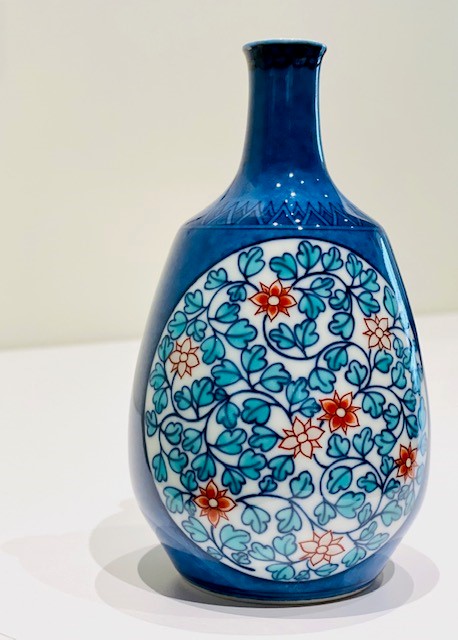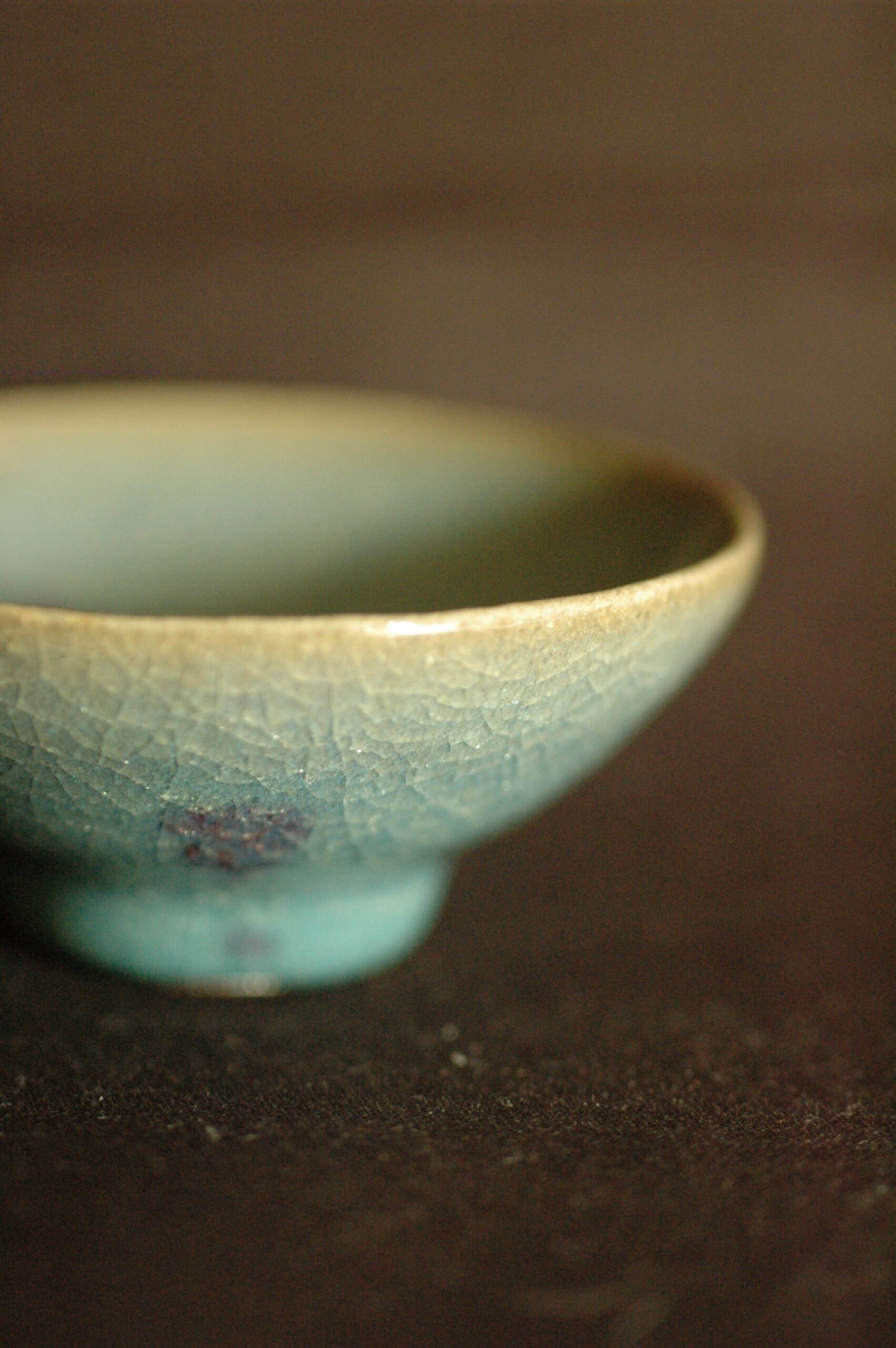WRITTEN BY AKI NAKANISHI, ARLENE SCHNITZER CURATOR OF CULTURE, ART, AND EDUCATION
Having been exposed to a wide range of teachings from aerospace engineering to folklore and religion during his academic years, Dr. Richard Anderson chose to live in Japan for extended periods on four occasions for a total of 12 years before settling in Oregon upon his return.
Anderson’s fascination with the Japanese culture, from its food to gardens, took a much deeper root on his fourth extended stay in Japan when he was hired by a good friend who was a Nichiren Buddhist priest. Anderson’s job was to assist the priest in building an art museum at the largest Buddhist temple complex in Tokyo – an over 700-year-old Buddhist establishment.
This is where Anderson’s journey with Japanese pottery began, some 30 years ago.

The priest was an art connoisseur with a keen interest in pottery and had collected a wide variety of Japanese ceramic art over the years. After Anderson settled into the complex (where he resided for four years) the priest began inviting Anderson into his own small temple where he lived with his wife, for tea and dinner.
After the meal, the conversation often turned to pottery, with the two of them examining pieces from the priest’s personal collection. The priest would talk about each piece as he carefully unwrapped it, revealing the writing on the protective box and the story of how he came to own it.

While it is part of the “protocol” for pottery connoisseurs to inspect the technical details of each piece, such as shape, glaze, and other distinguishing characteristics, one is tempted to imagine that a few cups of sake expanded the protocol’s typical boundaries, taking Anderson through the history of the six ancient kilns in Japan – Hagi, Bizen, Tamba, Shigaraki, Echizen, and Tokoname – as well as how pottery has been part of the culture of the Japanese people for the past 1200 years.
After a while, the priest turned the table. He stopped telling Anderson the specific details of the pottery and instead, asked him to start talking about the piece on his own.
When Anderson would fall short, the priest would interject to complete the picture. After a few sessions, the priest finally brought out a tokkuri (sake bottle) from Bizen with a figure of a mythical deity on it, and asked Anderson to elaborate on the piece. Anderson knew it was Bizen, but was unsure about the age until he saw the writing on the box that indicated the piece was made in the early Edo period (circa 1650).
Putting the tokkuri back in the box, the priest revealed that it was indeed a 350-year old Bizen, and then said, “I’m giving this piece to you tonight. We know that this tokkuri belonged to one of the most prominent collectors of Bizen pottery, Katsura Matasaburo 桂又三郎 (1901-1986), because he signed the box. And it belonged to me. Now it is yours. We have no idea who owned it for the other 300+ years. Now before you die you must give this piece away to someone who will appreciate it.”
In addition to teaching him the ascetics of pottery, Anderson felt that the priest was also trying to impart the Buddhist concept of non-attachment.
Now it is yours. We have no idea who owned it for the other 300+ years.
Years after leaving Japan, Anderson continued to study and collect Japanese pottery, including a unique collection of shuki (sake vessels). Some of the pieces in the collection were made by Japanese ceramic artists acclaimed as Living National Treasures*, as well as many other artists including Kitaoji Rosanjin and Kawai Kanjiro, both of whom achieved, yet voluntarily declined the status of Living National Treasure offered by the Japanese Government.

Why sake vessels? Anderson is often asked by fellow collectors and art professionals, to which he usually responds, “There are two basic kinds of shuki. Tokkuri (sake flasks) and guinomi (sake cups). Every national food has an etiquette that accompanies it. In Japan, as elsewhere, meals are shared moments with different kinds of pottery bringing the best out of the food. Probably the most famous shared eating/drinking experience in Japan is the tea ceremony. But just getting together with friends at a restaurant to eat and drink is a communal experience. Etiquette demands that one does not fill one’s own guinomi while drinking unless alone. Your neighbors are supposed to make sure that your guinomi is never empty, and you do the same for them. You take care of family and friends in this simple way. This simple act with these small vessels is a window into Japanese society. In addition, I enjoy drinking sake!”
It is especially during these unprecedented times that the simple things in our day-to-day lives can help to ground us to a sense of normalcy and bring us together as a community. Anderson’s story and his exceptional collection of shuki elevates these drinking vessels from treasured art to symbols of culture and humanity. We hope you can come to experience this exhibition, and perhaps even see beyond what meets the eye.
*“Living National Treasure” is a Japanese term for those who have mastered their art or craft and therefore help to preserve Japanese cultural heritage. These artists are designated as a “Living National Treasure” by the Minister of Education, Culture, Sports, Science and Technology (MEXT). This designation is a top honor in Japanese culture and seen as the pinnacle of one’s career.
Learn about the different styles of Japanese pottery, universe of techniques and regional varieties in addition to how one could start their own collection through a recording of this virtual fireside chat.